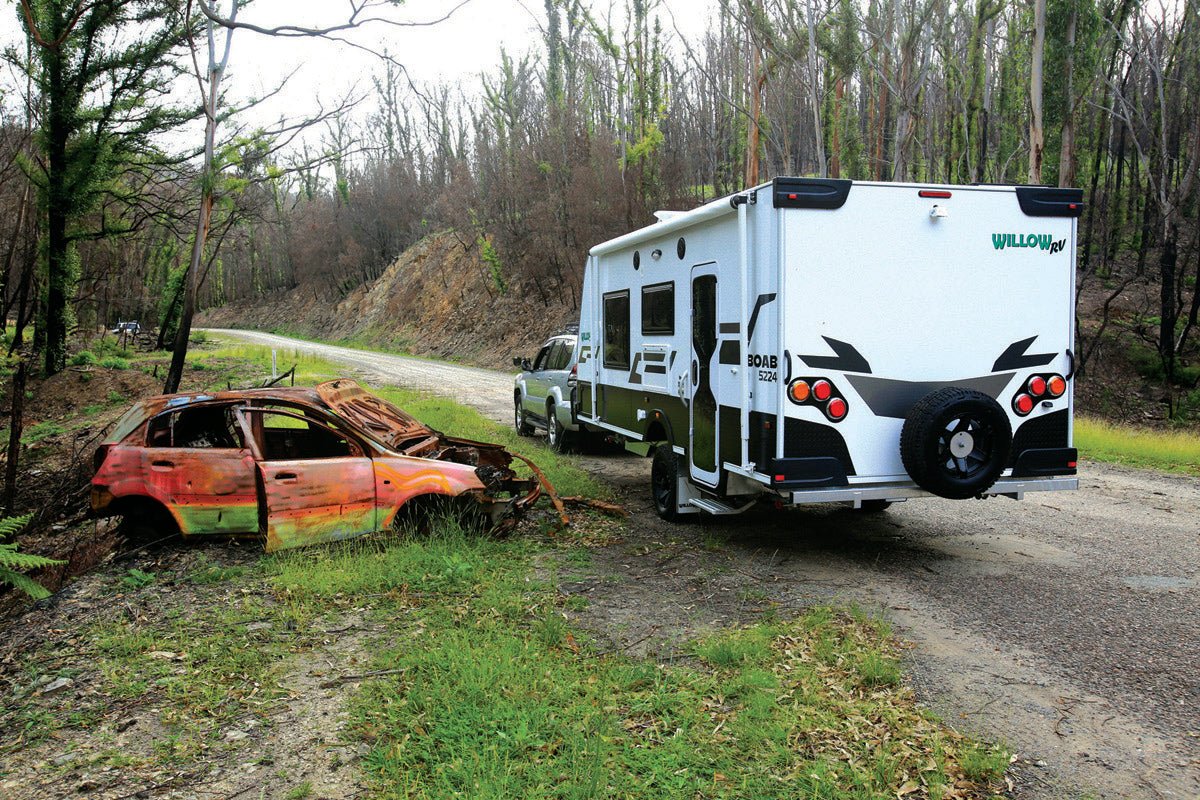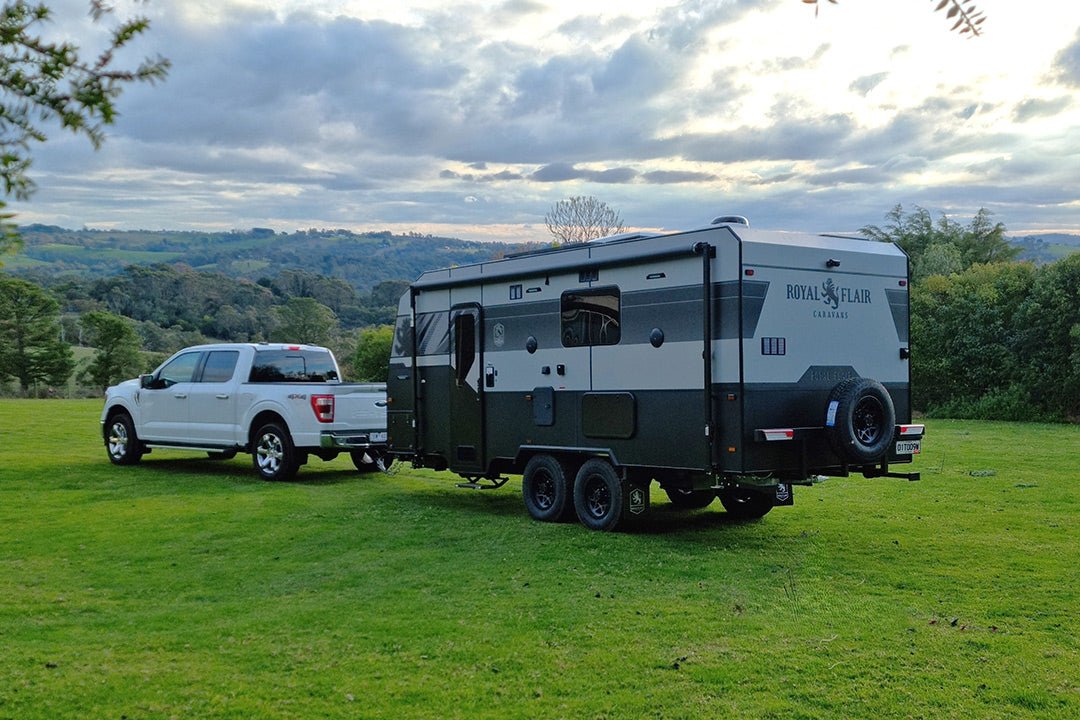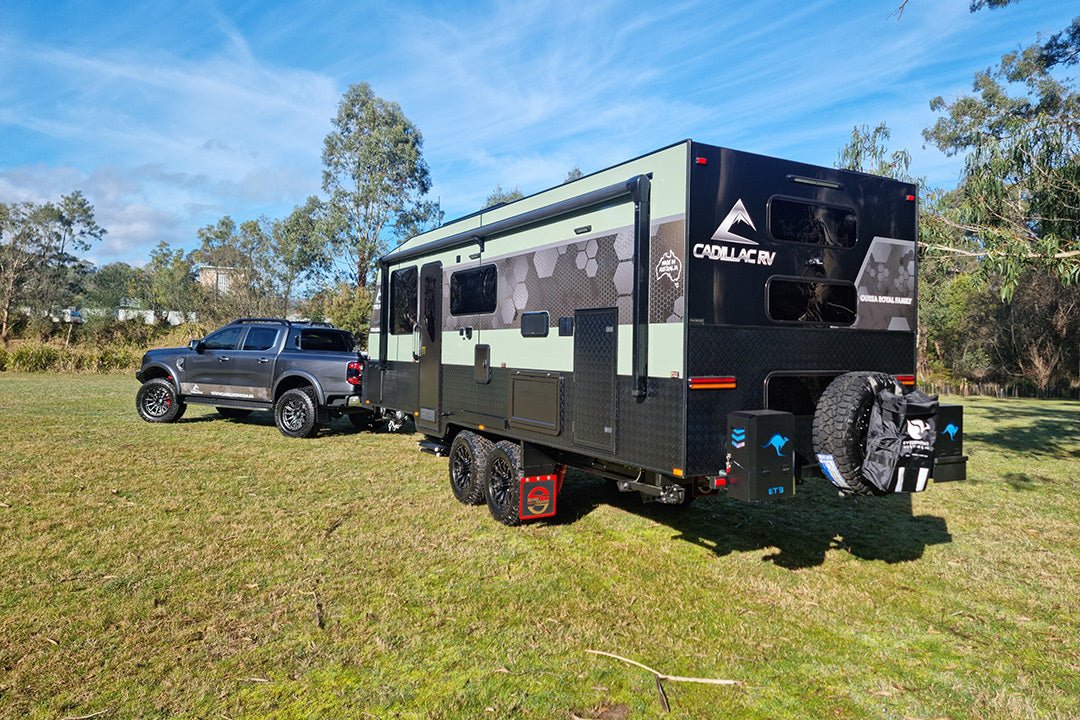Willow RV Boab 5224

Ian Jow isn’t a big fan of how the majority of caravans are built in Australia. When I spoke to him recently he explained his reasoning by pointing out that the first vans built in Australia were raised profile, aluminium-clad, timber-frame construction and much of the local industry is stuck in a building mode that dates back to the 1920s.
It’s hard to contest his argument that technological change has been exponential in the last 90 years, and perhaps it’s time for a more modern approach to the way we make caravans.
Jow and partner Eddie Wills have stepped up to change things, and their Willow RV brand of caravans is as different to the traditional build as a Model A Ford is to a Tesla.
Wills and Jow make a formidable combination, and when they started their new brand in early 2018, they combined their experience and their names to make up the Willow nameplate. Their combined caravan manufacturing experience spanned over 40 years and spread across three continents. Both worked at high levels for English, South African and Australian brands before starting up their own company from scratch in Pakenham, east of Melbourne.
While it’s easy to criticise the opposition, Wills and Jow back up their belief with some practical action. Their build techniques are arguably at the forefront of current affordable consumer technology as shared by other innovative players here and overseas. So, while I’m not suggesting we are talking carbon fibre chassis or a hydrogen power source, I’m pointing to a very strong, sensible-weight caravan, built to stand the rigours of time and outback travel.
THE BUILDER
Construction of each caravan starts with Wills at the computer with Analysis Software to design and digitally test a suitable chassis that balances weight and strength. Because the body of the van is lightweight and an immensely rigid monocoque structure on a composite floor, the underpinnings can be lighter because it does not need extra crossbeams for support. These parameters are built into the design, and each chassis is individually tailored to the use of the van. The hot-dipped chassis is then created at the Rollcraft factory adjacent to Willow RV.
The Willow RV team initially saw a demand driven by the older grey nomad crew, so the first vans were well-equipped, long-distance tourers oriented towards couples looking to spend extended time on the road.
But feedback from shows saw a demand from families for the new range. Things really started to happen for the fledgling builder when the Lorrimer family chose a Willow RV for their online Trip in A Van blog. A new van was designed for them, and the offroad-oriented Boab range was born. Demand is such that orders across all the models are now out to July 2021.
The smaller Boab 5224 was developed when Eden dealer, Bryan Hammond from ARV, encouraged the team to bring a sizeable single axle offroader to market. Our review van is the first of these new models off the line.
Bryan could see that not all couples wanting to do extensive travel desired a big and bulky van. There are loads of places that make it tough going for big rigs, and lots of owners, myself included, like the simplicity of a compact single axle unit.
It’s horses for courses, naturally, and there are plenty who need a bigger van with all the comforts of home and plenty of interior room. The larger Boabs might suit their needs.
THE BUILD
There is no timber in the Willow RV frame. Instead, the walls, roof and floor are all composite panels fixed at the edges and permanently sealed for weather protection and superior insulation.
For the composite walls, sheets of 2.7mm ply are bonded to high-density, closed-cell foam with extra polyurethane rails where furniture is fixed. A pre-painted 1.2mm aluminium panel sourced from Italy covers the exterior for a durable finish with a smooth modern appeal. Roof and floor are similar, but the floor panel is sprayed with a bitumen layer for added protection before it's bonded to the chassis.
Willow build the lightweight ply and composite interlocking furniture before the walls are fixed, and they lead all plumbing and wiring through the furniture, rather than through the walls. This means that these elements are easily accessible for maintenance and don’t detract from the integrity of the construction by leaving gaps in the frame.
The chassis on the offroad Boab range is from 150 x 50 x 2.5mm Australian steel while the A-frame is a similar size.
Jow is first to admit that even though the Willow RV is immensely strong, you can't take a caravan everywhere you could take a more compact camper trailer, and agrees that the offroad claims of many builders can be misleading. That said, the suspension on the review van is a single AL-KO Enduro trailing arm set-up with twin shock absorbers each side. Jow thinks it will easily handle tough going and corrugated roads all day long. Brakes are 12” offroad and pulled the van up efficiently during the review.
THE EXTERIOR
The gleaming white finish of the smooth alloy walls is offset with black checkerplate skirts along the sides. But it’s only the high stance of the van and the black alloy wheels with chunky all-terrain tyres that point to the more rugged intention compared to other caravans in the Willow RV range. It's an understated impression that eschews the gaudier decals and colours of most mainstream offroaders.
The Boab uses a self-locking AL-KO offroad coupling rated to 3500kg and it has excellent all-round movement for steep travelling over steep ground. A full-width stoneguard protects two 9kg gas bottles, and checkerplate runs high over the leading edge of the van. Higher up there's also a protective cover for the front window.
Along the passenger side, I found the usual assortment of a full-length awning, tunnel boot, picnic table and power outlets. The boot itself is worth mentioning though because it’s beautifully finished in lino and timber in a preview of the exceptional attention to detail throughout the van.
Down the back is a single spare on a two-arm bar and it’s worth pointing out the ABS corner mouldings top and bottom that protect and seal the vulnerable edges of the van.
The rear entry has a pull-down step, and a very neat and quite robust German-made fibreglass door which has a central panel with a flyscreen that opens for ventilation.
CHIC INTERIOR
The warm timber interior harks back to the design themes we reminisced over in our recent 600th issue of Caravan World. Differing from that nostalgic era is finely finished, square furniture more in keeping with modern design. It’s very contemporary, of course, but the light ash colours featured against mocha cupboards and drawers lend a homely retro sensation.
At 18’4” this Boab is about as long a van as you can build on a single axle platform and owners will appreciate extra room over more conventional single axle models. Turn right at the entry for the full-width ensuite where tastefully designed features continue the timber fit-out, complemented with a light coloured granite laminate on the vanity and splashback. I really like the effect.
A circular bowl with a fashionable mixer floats on the wide bench, leaving loads of room for personal items. There's a decent size shower with a transparent door and four handy storage nooks moulded into the structure. The fit-out includes a wall-mounted Daewoo washer, Thetford toilet and a central roof hatch that also has to cope with steam from the shower.
Back in the living area, we find a nearside kitchen with a café-style dinette opposite and an island double bed up the front. Two windows each side and roof hatches each end spread light throughout and make the interior beautiful and airy.
The soft fabric dinette cushions are covered in a sensible amount of padding to leave room to get appropriately seated and still be padded deeply enough to be comfortable. Drawers below and inboard of the seats open to reveal lift-out seat extensions that you can actually sit on, unlike some of the vulnerable pop-up versions. Hooray!
The kitchen has the essentials and enough bench space for most couples. A Swift 500 grill and cooktop has a Finch rangehood, and there's proper storage in overhead cupboards as well as a slide-out pantry and a dedicated cutlery drawer. A 186L three-way Thetford fridge is opposite the entry door and should be enough for most journeys.
Cupboards are neatly lined and have superior catches and struts, and I liked the fiddle rail on the top shelf to keep tins, jam and bottles in place. Little things like this show the builder is in touch with how we use our vans and is prepared to go that little bit extra to improve life on the road.
Map pockets and handy nooks with charging points alongside the bed are also convenient, but the space under the bed could use some improvement. It's useful for storage but would be better if the batteries and water pump were enclosed to avoid conflict with clean sheets and blankets.
OFF-GRID
Two 170W solar panels hooked to a pair of 100Ah batteries and twin 95L water tanks will be enough for most applications off-grid. A Projecta charger sits in a low cupboard with the display panel in another cabinet over the sink. Everything is very neatly wired, but fuses are not marked.
WARRANTY
A three-year warranty on the build shows confidence and recognises the realities of Australian Consumer Law. As an added bonus, and unusual in the industry, the warranty transfers to subsequent owners if you sell the van and there’s a network of repair agents if something goes awry, but appliances are covered by those suppliers. THE DRIVE
Our review took us south of Eden into the forests ravaged only recently by catastrophic fires. Trees were sprouting with fresh foliage but when we found an abandoned, burned-out wreck on the side of the road it looked like were heading into Armageddon.
The Boab 5224 is 120 Series Prado friendly as long as you don’t go overboard when loading. Tare weight is 2090kg so with a payload of 510kg you’d tip the scales at 2600kg. Load to 2500kg and the older model Prado (like the one towing our Boab) is legal. While on weights, Willow RV put each van over their weighbridge on completion and lists the results on every compliance plate. Other builders could take note and do the same.
Highway driving and some forestry roads convinced me the Boab is a beautifully set-up rig. It's well balanced, follows faithfully behind without any bad faults, and the AL-KO suspension will serve you well.
THE WRAP
Pricing as tested is $79,690. That's fair when you consider the innovative construction and high build quality. Pricing starts at $72,990, but this misses out on options including a second solar panel and battery and the very useful footrests at the dinette.
I think Bryan at ARV was on the right track by convincing Willow RV to extend their thinking into a single axle offroader. It's a capable and well-finished product, and its innovative structure is a model for contemporary design — well-done Willow RV.
SPECS
Willow RV Boab 5224
WEIGHTS AND MEASURES
Overall length 7.54m (24ft, 7in)
External body length 5.54m (18ft, 2in)
External body width 2.47m (8ft, 1in)
Travel height 2.95m (9ft, 4in)
Internal height 1.95m (6ft, 4in)
Nameplate Tare 2090kg
Nameplate ATM 2600kg
Payload 510kg
Ball weight 120kg
EXTERNAL
Frame Composite
Cladding Euromax alloy
Chassis Rollcraft 150 x 50 x 3mm
Suspension 2600kg AL-KO Enduro
Brakes 12in drums
Wheels 16in alloy 245 x 70 tyres
Water 95L x 2
Battery 2 x 110Ah
Solar 2 x 170W
Air-conditioner Yes
Gas 2 x 9kg
Sway control No
INTERNAL
Cooking Swift 500 mini grill
Fridge 186L
Ensuite Toilet and shower
Lighting LED
Hot water Yes
PRICE FROM
$72,990
OPTIONS FITTED
Second battery, second solar, upgraded entry door, external speakers, grey water tank, reverse camera, footrests, front window stoneguard, drawbar stoneguard, washing machine, NSW rego
PRICE AS SHOWN
$79,669
MORE INFORMATION
ARV Caravans
Phone (02) 4409 2543
Address Princes Hwy, Eden NSW 2551
Web aussierv.com.au







